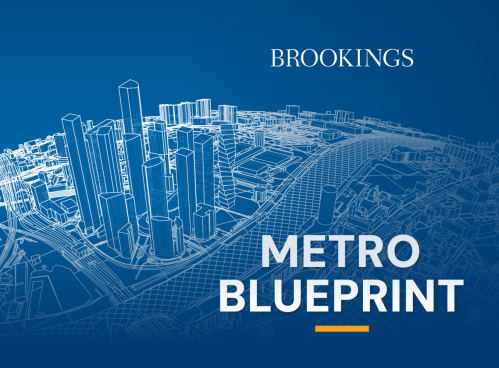This paper was prepared for the 2019 Municipal Finance Conference on July 15 & 16, 2019. The conference is a collaboration of the Brookings Institution’s Hutchins Center on Fiscal and Monetary Policy, the Brandeis International Business School’s Rosenberg Institute of Public Finance, Washington University in St. Louis’s Olin Business School, and the University of Chicago’s Harris Institute of Public Policy. It aims to bring together academics, practitioners, issuers, and regulators to discuss recent research on municipal capital markets and state and local fiscal issues.
Defaults on local government bonds have been more frequent than credit rating agencies have reported, according to a paper by Lang (Kate) Yang of The George Washington University and Yulianti Abbas of the University of Indonesia prepared for the 2019 Municipal Finance Conference at Brookings. But because these defaults usually occur on bonds issued to fund specific projects, as opposed to general obligation bonds, the defaults do not tend to raise the borrowing costs of the defaulting local governments.
Using data on defaults reported by local governments from 2009 to 2015, including bonds that were not rated, the authors identify 2,563 defaults of all kinds – including technical defaults (for example, failure to file an audited financial report) and pre-monetary defaults (for example, unexpectedly drawing on reserve funds to maintain debt-service-ratios required for a loan) as well as failure to make interest payments. Excluding the highly publicized bankruptcies of Detroit, Jefferson County, and Puerto Rico, they count 2,049 defaults with par value of $7.2 billion – still a very small slice of all municipal bonds outstanding.
General Obligation (GO) bonds, the most common type of municipal bonds, are backed by the full faith and credit of the issuing municipality, and issuing governments can tap into all available revenue sources to meet their obligations to bondholders. Revenue bonds, in contrast, have a claim on a specified stream of revenues – tolls on a highway or ticket revenues at a stadium, for instance. Some revenue bonds are issued by a municipality on behalf of a private entity.
Most of these defaults that Yang and Abbas track are among bonds that haven’t been rated by a credit rating agency, uninsured bonds, or bonds that are not GO bonds. They do not find an increasing number of defaults; indeed, excluding the three big municipal bankruptcies, they find a decline in defaults since 2012.
Source for both charts: Yang and Abbas 2019, Table 3. Note: Includes Technical, Pre-monetary, and Monetary defaults. Top 3 are Detroit, Jefferson County AL, and Puerto Rico. Data only includes 2009 data starting on July 1.Comparing interest rates on government debt across counties and municipalities that experienced some form of default on non-GO bonds to those that did not, the authors find no significant effect of non-GO defaults on overall borrowing costs of the defaulting entity. These effects persist even when controlling for bond characteristics, as well as when looking only at municipalities that frequently default, are frequent borrowers, experience high unemployment rates, and have fewer legal hurdles to declaring municipal bankruptcy. The authors conclude that local governments should be comfortable issuing non-GO bonds or helping private entities access municipal markets despite the fact that such securities have a higher default rate than GO bonds, in part because there is no spillover from a non-GO default to municipal borrowing costs. They also conclude that local governments should not bail out failing non-GO bonds with general tax revenues because the spillover effects are so minimal.Read the paper here»
The Brookings Institution is committed to quality, independence, and impact.
We are supported by a diverse array of funders. In line with our values and policies, each Brookings publication represents the sole views of its author(s).





Commentary
Muni bond defaults more common than rating agency tallies suggest
July 15, 2019